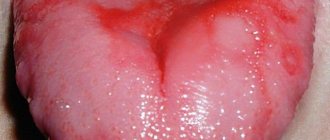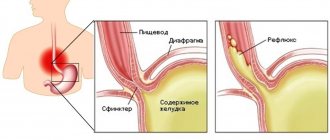How to detect and how to treat acetonemia?
Diagnosis of elevated acetone in the blood is possible both at home and through laboratory tests of blood and urine. At home, the object for study can be the urine of an adult or a child who is likely to have ketosis. A pharmacy test strip dipped in urine will show whether ketone bodies are higher than normal, and if they are elevated in the urine, then most likely in the blood too.
The test strip is equipped with a special indicator of the concentration of ketone bodies in the test liquid. Urine for analysis should be obtained no earlier than 4 hours before. The test strip is placed in a container with urine for a few seconds, and after a couple of minutes you can evaluate the result by comparing the color of the strip with the indicator scale:
- negative - there is no acetone in the urine;
- mild ketosis (+) - acetone content is no more than one and a half mmol per liter;
- moderate ketoacidosis (++);
- severe acetonuria (+++), requiring hospitalization of the patient.
Laboratory diagnosis of acetonemia includes a biochemical blood test and urine testing to determine ketone bodies and other indicators of impaired metabolism (glucose, uric acid, liver enzymes, etc.). Be sure to set your sugar level to rule out diabetes.
In case of diabetic acetonemia, the patient must be hospitalized. The clinic corrects sugar levels by administering insulin, prescribes fluid infusions to replenish water losses, and restores mineral metabolism. Adults with mild forms of ketoacidosis remain in the hospital for a day, after which, when metabolic rates normalize, they can go home.
Parents of children who have already encountered the problem of acetonemia most often know what to do if their child’s well-being worsens. In the event of a crisis, you should definitely contact specialists.
First aid for a patient with ketosis is to replace the fluid that the body is losing, and the drink for rehydration should be alkaline . It is recommended to consume up to one and a half liters of liquid per day in small portions every 10-15 minutes (at the rate of 120 ml per kg of child’s body weight). At home you can prepare sweet tea with lemon, drink mineral water with sodium bicarbonate, the pharmacy sells special solutions - rehydron, Humana.
When nausea and vomiting occur, it is advisable to give enterosorbents that alleviate dyspepsia and partially bind ketone bodies - smecta, activated carbon, enterosgel. Glucose is given to provide the body with energy.
If the patient’s condition worsens, symptoms of an acetonemic crisis appear, or there is no positive result from first aid, an ambulance team should be called, which will arrange intravenous administration of fluid and glucose and take the patient to the hospital.
In the clinic, infusion therapy continues, medications against nausea and vomiting (Motilium, Cerucal), an enema with sodium bicarbonate, and intravenous infusions for rehydration are prescribed. A mandatory rule in the treatment of acetonemia is following a diet:
- While ketone bodies are detected in the blood, you can only drink water; as your appetite is restored, add dairy-free porridge and crackers;
- After the absence of acetone for at least a day, the diet expands - boiled potatoes, lean meat, fermented milk products, no earlier than a week later you can give milk diluted with water;
- Sweet tea, honey to meet the need for glucose;
- Fresh vegetables and fruits are excluded for several days; bananas can be given with caution.
To restore the functioning of the liver and pancreas, enzymes are used with food - Creon, pancreatin.
- Causes and methods of eliminating bad breath in diabetes
Prevention of increased acetone in the blood consists of following the principles of a healthy lifestyle: adequate physical activity, proper regular nutrition balanced in protein, carbohydrates, vegetables and fruits, maximum avoidance of stress and fatigue, sufficient exposure to fresh air.
The basis for the prevention and treatment of elevated acetone in the blood in children is a review of the child’s lifestyle and diet, which must include:
- regular and long walks;
- sports, physical exercise (but not to the point of overwork (!));
- water activities, starting with baths and ending with all kinds of tonic showers, dousing;
- sufficient duration of night sleep (at least 8 hours), in preschool age - a quiet hour during the day;
- meals are fractional, without excess fats and calories, since even a single overfeeding with fatty foods can lead to ketoacidosis.
A child prone to acetonemia should be protected from excessive exposure to the open sun and, if possible, completely avoid being in front of the TV or in front of a computer. Excluded from the diet are fatty meats, liver, thick broths, fish roe, fatty fish, canned and smoked foods, buns, cakes, lemonades, and chocolate.
Since a growing body needs adequate nutrition, the diet requires the presence of vegetable oil, dairy products, eggs, cereal porridge, chicken fillet, rabbit meat, fruits and berries. Your child can be given tea with lemon and grapefruit, which have an alkalizing effect.
Children with elevated acetone in the blood are observed by a pediatrician at their place of residence and receive preventive therapy with vitamin complexes and hepatoprotectors every six months. For increased nervousness, the use of sedatives (valerian, herbal teas), massage, and water treatments is indicated.
The prognosis for acetone syndrome in children is usually favorable: by adolescence, the crises stop, but it must be remembered that these children have a higher risk of developing metabolic disorders such as gout, cholelithiasis, and diabetes mellitus in the future. Ketoacidosis in adults, especially against the background of diabetes mellitus, indicates serious metabolic disorders that require adjustment of therapy and more careful monitoring of blood sugar levels.
Diagnosis of acetonemia
When diagnosing, the size of the liver is determined. Analyzes show a disorder of protein, lipid and carbohydrate metabolism and increased acidity. But the main way to diagnose the presence of acetone in the urine and blood of children with diabetes is to examine urine.
Note! To confirm the diagnosis yourself, indicating that the acetone norm has been exceeded, special test strips are used.
In the process of being lowered into urine, the test becomes pink, and with severe ketonuria, the strip acquires a purple tint.
Precautions during operation
In small volumes, acetone has low toxicity; a highly concentrated product irritates the skin and provokes a burning sensation in the eyes. If you have to come into contact with this substance for a long time at work, it is recommended to follow the safety rules, wear gloves, protect your bronchi and throat with a respirator, and if the solvent gets on your skin, wash it off with water.
Although acetone is of low risk to health, if large volumes of vapor are inhaled:
- mucous membranes become inflamed;
- lungs swell;
- toxic pneumonia develops.
Under conditions of prolonged work and highly concentrated vapors entering the body, acetone acts like a drug. The person complains of weakness and dizziness, intoxication, and abdominal discomfort. Acetone intoxication usually does not end in death, but has a negative effect on the lungs, affects the kidneys, leads to the appearance of blood in the urine, and temporary loss of orientation in space.
When inhaled, acetone is eliminated over a long period of time, which can lead to accumulation in tissues and organs, and this poses a health hazard. In Russia, the circulation of dimethyl ketone is controlled; this substance is included in the table of the List of Narcotic and Psychotropic Drugs and Precursors. In chemical laboratories, the receipt and consumption of material is recorded in a log book.
Acetone in the urine of pregnant women
In addition to the general factors that cause increased acetone levels, there are special reasons that lead to this phenomenon during pregnancy.
- Why does the smell of acetone appear in my nose?
One of these reasons can be called early toxicosis, which manifests itself in the first trimester of pregnancy. As a result of frequent vomiting, food cannot be properly digested, appetite becomes much worse, which leads to dehydration of the body - this leads to the fact that the level of acetone in the urine of a pregnant woman becomes increased. The main symptoms of this disease will help determine this - the specific smell of urine, feces and vomit, which have the smell of acetone or acid. Also, the expectant mother has bad breath, since this smell also resembles acetone.
Another common cause of acetonuria is gestational diabetes, which is dangerous for the health of children. It often leads to rapid weight gain in the fetus, which threatens the development of serious pathologies. Therefore, if a urine test during pregnancy shows an elevated level, a repeat test is first performed to rule out a medical error, and then an in vitro blood test is prescribed to determine blood sugar, allowing a correct diagnosis to be made.
Since acetone in the urine of pregnant women is a sign of pathology, there is no special treatment to reduce the risk of its occurrence. This means that the main treatment should be aimed at ridding the expectant mother of the underlying disease. If the main cause of acetone is toxicosis in the first trimester of pregnancy, it is important to maintain the correct drinking balance. In case of severe toxicosis, a woman should drink a lot of water, but this should be done in small portions - this will prevent further vomiting during pregnancy.
In a hospital setting, the expectant mother is prescribed an intravenous infusion of an infusion solution, and after the condition improves, a high-carbohydrate diet is prescribed. If the main symptoms of the disease are caused by gestational diabetes, a special diet is prescribed to treat it, excluding most foods with sugar and carbohydrates. If necessary, insulin administration and adherence to minimal exercise are prescribed.
Acetone smell from child's mouth
Children's breath smells like acetone most often due to type I diabetes. The disease develops slowly and insidiously, so parents often do not know that their child is sick. In addition, young patients often experience weight loss, excessive thirst, weakness, and pollakiuria.
This type of odor can also occur when a child doesn't drink enough. Sometimes parents report an ammonia odor from their child's mouth during an infection such as pharyngitis.
A strange smell from the mouth should prompt parents to contact a pediatrician, who will prescribe the necessary examinations.
Detection of acetone in urine
Diagnostics of acetone in the body
In recent years, the procedure for detecting acetone in urine has been significantly simplified. If the patient has the slightest suspicion of acetonuria, then he simply needs to purchase special tests in the form of strips from the pharmacy:
- This procedure must be carried out for three days in a row on morning urine.
- The container with the liquid must be carefully lowered into the test strip, remove it and wait just a few minutes.
- The yellow stripe turning pink indicates that acetone is present in the body.
- If the test strip turns purple, this is an indication that acetonuria is progressing in the patient’s body.
Of course, the test is unable to show exact numbers, however, it shows the level of acetone that requires immediate contact with a specialist.
In order to determine the level of acetone in the human body, the doctor prescribes a clinical urine test.
Typically, urine collection is carried out in the morning after all hygiene procedures have been completed. In a healthy person, ketone bodies are present in human urine in such minute quantities that laboratory methods are not even able to detect them. It is for this reason that the normal result is the complete absence of acetone in human urine.
- ACCP for rheumatoid arthritis: norm, analysis, interpretation
In case of a weakly positive reaction to acetone, one plus is placed on the results form, and in case of a positive result, the laboratory assistant indicates two or three pluses. In case of a sharply positive reaction, which is marked by four pluses, immediate hospitalization of the patient and provision of medical care is required.
Biological properties
Acetone is produced in the body of animals and humans, synthesized as a result of metabolism. Normally, the content of the substance per 100 ml of blood does not exceed 2 g, a small part of acetone is excreted in the urine. The level of dimethyl ketone increases in case of metabolic disorders, in patients with diabetes mellitus, after heavy physical exertion, and fasting. When the component is contained in a dose exceeding 60 ml, the kidneys are affected and there is a risk of changes in the lungs.
A small part of the acetone present in the blood is converted into carbon dioxide and released with the air exhaled by a person, a small proportion of dimethyl ketone leaves unchanged in urine and sweat.
Normalization methods
Acetone, which appears in diabetes, can be removed by saturating the human body with the correct glucose. To do this, just eat something sweet.
It is possible to remove acetone from the body by drinking a significant amount of liquid. However, it is difficult to do this on your own due to the repeated vomiting that accompanies the condition.
Sweetened tea, fruit juice or compote will help rid the body of acetone without causing vomiting. This drink should be given a teaspoon every few minutes.
Fruit juice will help rid the body of acetone without causing vomiting
It is also possible to get rid of acetone with the help of a proper diet, which will be based on the consumption of light carbohydrates: semolina or oatmeal, mashed potatoes, vegetable broth, etc.
Diet requirements:
- Meat can only be dietary: rabbit, turkey, veal. It is recommended to stew, boil, bake;
- fish should be lean (for example, hake, pollock);
- vegetables and fruits will help restore water balance. Quince is useful for acetonuria; compote or jam is made from it. The consumption of citrus fruits and bananas is not recommended.
Products that help normalize the condition - gallery
Fruits Vegetables Pollock cooked in the oven Rabbit meat Boiled turkey
To remove ketone particles in diabetes, cleansing enemas are given. In especially severe cases, acetone can only be eliminated during hospitalization.
It is possible to prescribe medications that prevent dehydration. For this purpose, a solution called Regidron or its analogues, which can normalize water-salt metabolism, is suitable. Additionally, a glucose solution with a concentration of 5% can be used. Enterosorbents are also shown, including Smecta, Enterosgel, Filtrum, etc.










